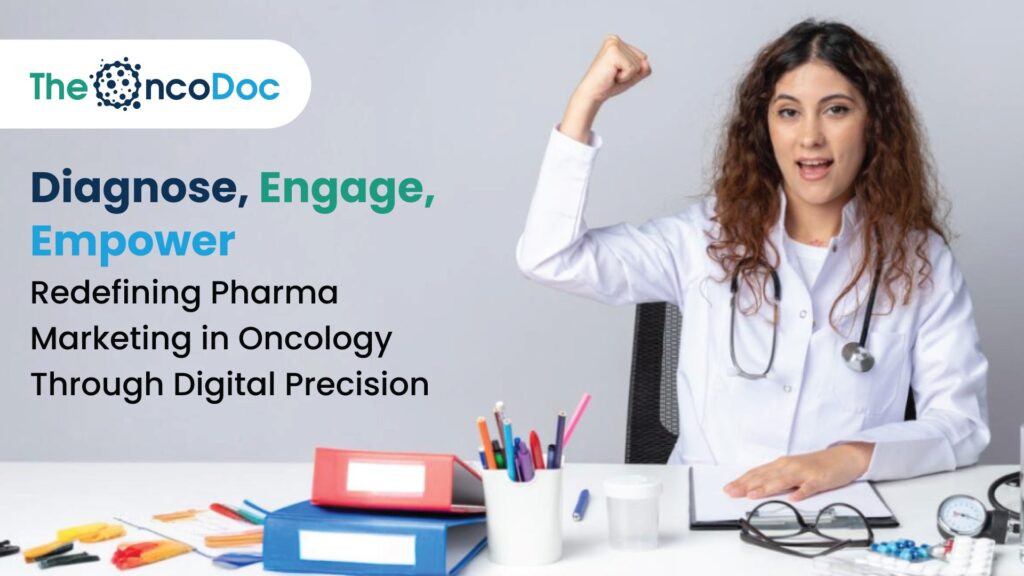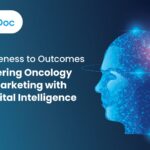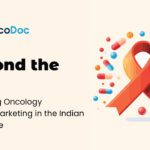Introduction: A Paradigm Shift in Pharma Marketing
The oncology ecosystem is undergoing a profound transformation. Historically, pharmaceutical marketing efforts in this domain were tightly tethered to oncologists and focused on promoting therapies and clinical innovations. However, this traditional downstream model is becoming increasingly inadequate in addressing the full complexity of the cancer care continuum.
In India, where cancer mortality is heavily influenced by late-stage diagnosis, the role of the pharmaceutical marketer must evolve. The new opportunity, and responsibility, lies not only in promoting treatment options but in empowering early diagnosis, enhancing health literacy, and enabling timely referrals through sophisticated digital outreach. When combined with artificial intelligence (AI), regional personalization, and data-backed strategies, pharma marketing can be a pivotal force in changing oncology outcomes.
1. From Products to Patients: Reimagining the Pharma Role
Pharma companies are increasingly embracing the idea that their responsibility doesn’t begin at the point of prescription. By intervening earlier in the cancer journey ,at the awareness and diagnosis stages, they can shift the trajectory of outcomes and brand perception.
Pie Chart 1: Evolving Pharma Marketing Spend in Oncology
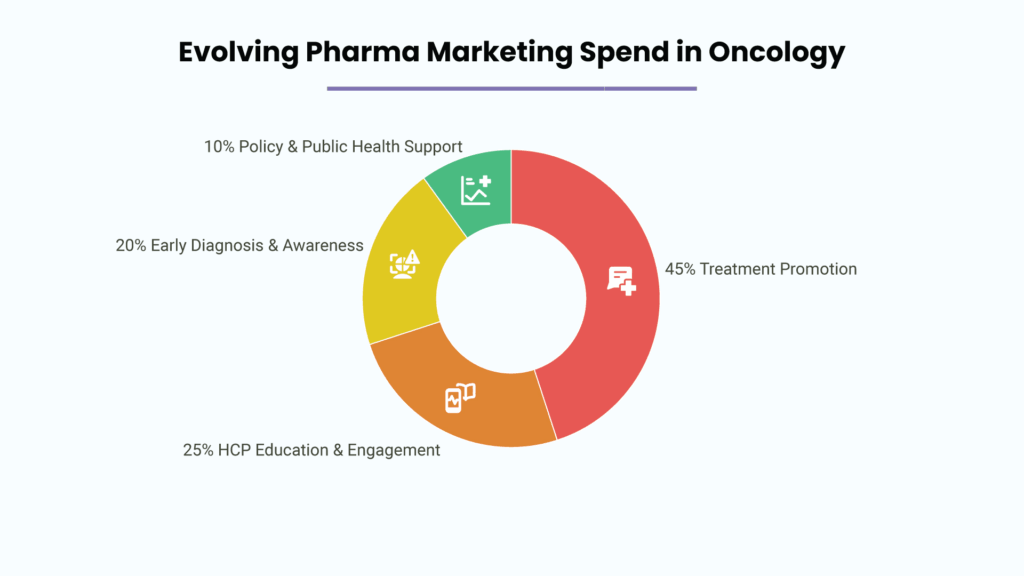
This repositioning, from a product-focused approach to a patient-outcome-driven mindset, requires deep integration of technology and content strategies. The question is no longer “how do we promote our drug?” but “how do we reduce diagnostic delay and help people live longer?”
2. Digital Frontlines: Targeting the Awareness Deficit
India continues to struggle with late cancer diagnoses. A 2023 study by the Indian Council of Medical Research (ICMR) revealed that nearly 68% of cancer cases are diagnosed at Stage III or IV. Much of this can be attributed to lack of awareness about symptoms, stigma, and poor referral behaviors among general physicians.
Digital Channels Can Bridge the Gap
- Geo-Targeted Campaigns: Using AI tools to identify high-risk districts based on hospital admission rates, digital campaigns can deliver localized content in vernacular languages.
- Symptom Literacy: Educating the public through YouTube Shorts, Instagram Reels, and WhatsApp forwards, especially for breast, oral, cervical, and lung cancers.
- Voice-Based Awareness: IVR-based health alerts (especially in rural areas) can deliver key messages about warning signs in regional dialects.
Case Study Insight: Tamil Nadu Cervical Cancer Drive
In 2023, a pharma-backed campaign in Tamil Nadu launched a WhatsApp chatbot that helped women self-screen symptoms and find nearby screening centers. The campaign reached over 3 million users in three months, resulting in a 28% increase in diagnostic visits.
3. Empowering Primary Care as the New Frontline in Early Cancer Detection
In India’s complex healthcare ecosystem, primary care providers, general practitioners (GPs), gynecologists, and even dentists, are usually the initial healthcare professionals patients approach when early cancer symptoms appear. These frontline health workers see a wide range of symptoms daily, many of which could be early indicators of cancers like breast, cervical, oral, lung, or colorectal. Yet, their potential to detect and refer cancer cases at the earliest stage remains vastly underutilized.
This isn’t due to a lack of intent, but a gap in accessible, real-time tools and training. The good news? Pharma companies are in a unique position to bridge this gap, not as mere product promoters, but as partners in proactive care.
Redesigning Pharma-HCP Collaboration
Forward-thinking pharma brands are shifting their strategies to engage these healthcare providers in more meaningful ways:
- Diagnostic Flowcharts in Mobile Apps: Interactive tools embedded in widely used clinical apps can help providers quickly identify red flags based on symptom clusters and patient history. Think of it as a “decision GPS” that guides doctors toward timely referrals.
- CME Videos in Regional Languages: Platforms like Medtalks and Hidoc Dr offer an excellent delivery channel for pharma-supported CME (Continuing Medical Education) modules. When presented in vernacular languages and bite-sized formats, these videos can dramatically improve knowledge retention.
- Gamified Learning: Quizzes with digital certificates, rewards, or leaderboard rankings incentivize participation while boosting diagnostic acumen. Frontline HCPs in rural and semi-urban areas are especially responsive to these interactive, low-bandwidth formats.
These touchpoints do more than educate, they transform the perception of pharma brands. No longer seen as product pushers, these companies are increasingly viewed as clinical collaborators working to improve patient outcomes.
Impact in Numbers: How Digital Interventions Accelerate Referrals
The results speak for themselves. In states where digital engagement programs were implemented, the time taken for a patient to be referred from the primary care level to a cancer specialist dropped significantly.
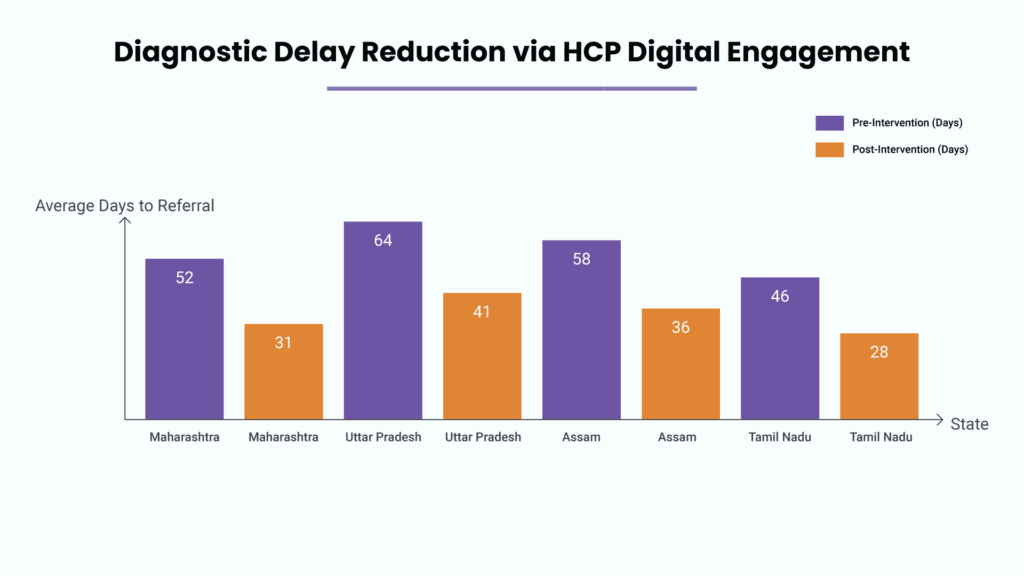
4. The Rise of Conversational AI and Predictive Targeting
AI is no longer a buzzword, it’s operational reality in digital pharma marketing. AI chatbots, voice assistants, and intelligent nudges are helping drive two key pillars:
A. Patient Journey Mapping
Machine learning algorithms can now track online behavior, such as search history, forum queries, or app usage, to predict patient segments likely to exhibit early symptoms. These users can then be served symptom checkers, doctor locators, and reminders via Google Display Network or Facebook ads.
B. HCP Behavioral Targeting
Using AI to analyze prescription data, referral rates, and CME participation, pharma marketers can classify HCPs into high, moderate, and low engagement buckets. Micro-content is then tailored to nudge specific behaviors, such as referring earlier or screening proactively.
Example: An oncology brand created three types of WhatsApp content for doctors based on their engagement level. Those in the “low” category received emotional stories of missed early diagnosis; “medium” ones received CME invites; “high” ones got co-branded toolkits for patient education.
5. Multi-Stakeholder Collaborations as Growth Catalysts
Pharma cannot, and should not, operate in silos. Collaborating with NGOs, government bodies, and patient advocacy groups can provide access to underserved communities and enhance authenticity.
Strategic Partnerships Include:
- State Health Departments: Co-developing AI-powered symptom checker apps in regional languages.
- Survivor Networks: Creating real-life story content to reduce stigma and encourage early screening.
- CSR Arms of Corporates: Leveraging existing networks to scale rural health literacy.
Mini-Case: Survivor-Led Early Detection Campaign in Assam
A coalition between a pharma brand, a breast cancer survivor group, and the Assam health ministry led to a pilot awareness drive in three districts. Outcomes included a 52% increase in mammogram sign-ups and over 400 new GPs onboarded for early detection training.
6. Redefining Metrics from Impressions to Interventions
In traditional digital marketing, metrics like impressions, click-through rates, and video views have long served as performance indicators. But in the high-stakes world of oncology, where every second matters, these surface-level indicators fall short. A high number of views doesn’t mean a person recognized the symptoms of colorectal cancer. A thousand clicks don’t necessarily lead to a single screening.
In oncology pharma marketing, especially in markets like India, success must be measured not just in digital reach but in real-world health actions. The new mandate is clear: marketing performance must be aligned with clinical relevance.
From Vanity to Value: The Shift in KPIs
Pharma marketers are now designing campaigns that track more actionable and health-centric metrics. These are not just numbers on a dashboard, they represent behaviors and decisions that could save lives. Among the most impactful metrics gaining traction:
- Diagnostic Form Downloads per District: This reveals regional responsiveness and helps correlate campaign performance with geographic burden. It also enables adaptive re-targeting in low-uptake zones.
- Patient Query Conversion Rate (Chatbots/IVRs): Many patients interact with digital platforms without taking action. Conversion tracking, i.e., whether a chatbot conversation led to a booked screening, has become a core metric of engagement efficiency.
- Referral Lag Time: Measuring the time taken from first symptom recognition to GP consultation to oncologist referral offers a tangible indicator of the campaign’s influence on early diagnosis behavior.
- Recurring Visits to Awareness Platforms: One visit may reflect initial interest. Repeat interactions suggest the content is being trusted, absorbed, and possibly shared, indicating deeper impact.
This metric evolution reflects a broader industry movement, from informing to enabling. Campaigns are no longer just awareness generators but diagnostic accelerators.
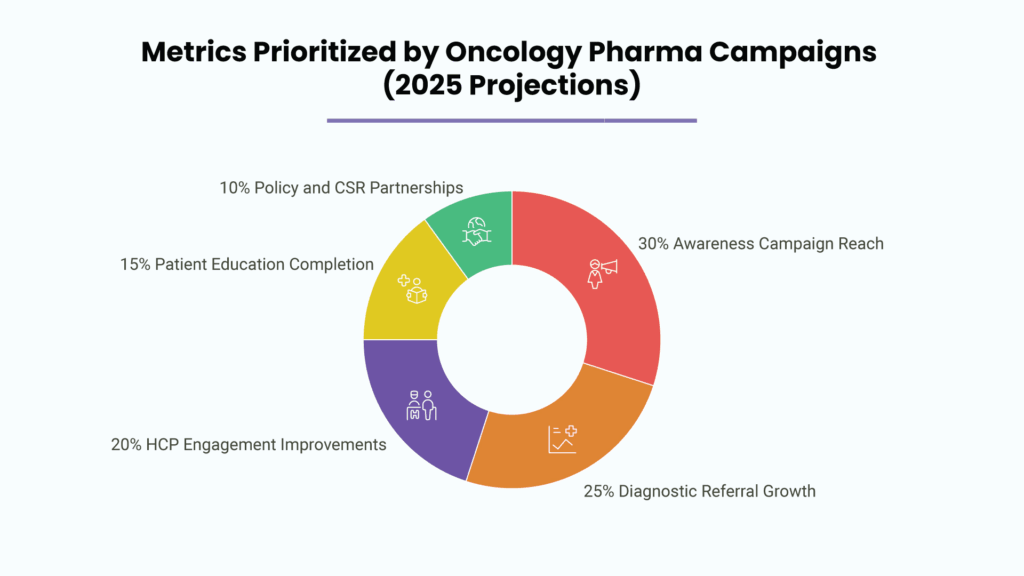
This new framework isn’t just about better reporting, it’s about deeper accountability. When campaigns are optimized around outcomes like screening rates and faster referrals, marketing becomes a lever for public health advancement, not just brand visibility.
7. The Ethical Imperative in Oncology Marketing: More Than Just Compliance
In the race to innovate with AI, chatbots, predictive models, and hyper-targeted outreach, there’s one thing oncology marketers cannot afford to overlook, ethics.
When you’re dealing with something as personal and high-stakes as cancer, trust becomes everything. And trust isn’t built through algorithms or ad campaigns alone, it’s earned through responsibility, transparency, and inclusion.
With the growth of digital approaches comes an increase in ethical considerations. Pharma marketers must embed principles of privacy, fairness, and accessibility into the core of every campaign, not as a checkbox, but as a non-negotiable foundation.
Privacy Isn’t Optional: It’s Sacred
Patient and HCP data fuels AI personalization, geotargeting, and content optimization. But without consent-driven data collection and adherence to Indian data protection norms, even the best campaigns can cross ethical boundaries. Anonymizing data isn’t just good practice, it’s essential to maintaining public trust.
Bias: The Invisible Barrier
AI can be smart, but it’s not always fair. Algorithms trained on skewed datasets can overlook vulnerable populations, missing patterns in women, rural patients, or underrepresented regions. Regular audits of AI prediction engines must be conducted to detect and eliminate gender, geographic, or socioeconomic bias. Because if AI favors convenience over equity, we risk reinforcing the very disparities we aim to solve.
Design for All, Not Just the Digital Elite
Inclusion isn’t just about who sees your campaign, it’s about who can understand and act on it. India’s digital audience is vast but uneven. Campaigns must be language-inclusive, visually accessible, and usable for people with disabilities or limited digital literacy. From voice-guided bots in vernacular languages to high-contrast visuals for the elderly, ethical marketing means thinking beyond the urban smartphone user.
The Real Cost of Ignoring Ethics
The implications of neglecting these imperatives go far beyond regulatory fines. Breaches, bias, or exclusion can instantly unravel years of brand equity, especially in healthcare where the stakes are life and death. In oncology, ethical marketing is not just responsible, it’s strategic.
If pharma brands want to be seen as partners in care, not just product vendors, they must commit to responsible innovation. The future of oncology marketing will not be shaped by technology alone, but by how humanely and inclusively that technology is applied.
8. From Local to National: Scaling with Policy Backing
Early cancer detection should be part of India’s national digital health strategy. Pharma brands must collaborate with the Ministry of Health and programs like Ayushman Bharat to scale:
- WhatsApp Referral Dashboards for frontline workers
- Integrated Electronic Health Records to track referrals and outcomes
- Govt. Hotlines powered by pharma-built AI to triage symptoms
Conclusion: Marketing as a Public Health Driver
The future of oncology pharma marketing lies not in louder ads, but in smarter, empathetic, and impact-driven interventions. By aligning brand goals with public health needs, early diagnosis, timely referral, and equitable awareness, pharma can become a transformational force.
Key takeaways:
- Digital-first outreach must start upstream, not just at treatment.
- AI is a critical enabler, but must be paired with ethical frameworks.
- HCPs, NGOs, governments, and survivors are essential partners.
- Success must be redefined by lives improved, not just impressions served.
In the battle against cancer, every delayed diagnosis is a lost opportunity, and every early one, a potential life saved. It’s time for pharma marketing to own this responsibility.
The Oncodoc team is a group of passionate healthcare and marketing professionals dedicated to delivering accurate, engaging, and impactful content. With expertise across medical research, digital strategy, and clinical communication, the team focuses on empowering healthcare professionals and patients alike. Through evidence-based insights and innovative storytelling, Hidoc aims to bridge the gap between medicine and digital engagement, promoting wellness and informed decision-making.

